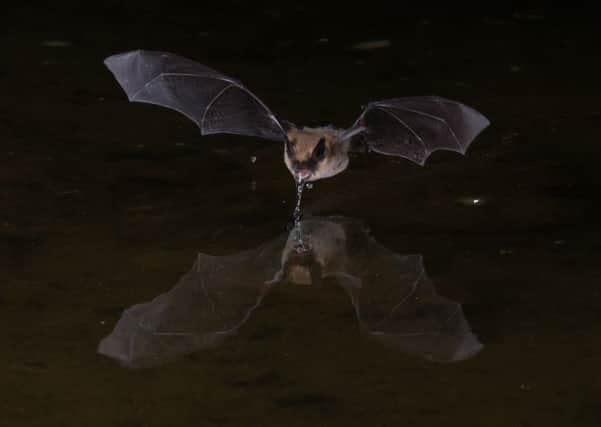Scientists pioneer bid to curb deadly rabies


Researchers from the University of Glasgow used “glowing” fluorescent gel to estimate the potential effectiveness of spreadable vaccines to control diseases in wild bats in South America.
Rabies vaccines given to bats can be transferred from one bat to another – however how widely they were spread was not previously known.
Advertisement
Hide AdAdvertisement
Hide AdThe fluorescent gel – called Rhodamine b – was applied to bats in three colonies in Peru, where it acted as a marker to simulate the bat-to-bat spread of an oral rabies vaccine.
When the gel was ingested by bats that groomed each other, it led to fluorescence in the bats’ hair follicles, which was then monitored by fluorescent microscopic analysis of hair samples collected by the scientists.
Where common vampire bats routinely feed on human blood, rabies is estimated to cause up to 960 deaths in every 100,000 people, while losses from livestock mortality exceed £38.61 million annually, disproportionately affecting impoverished, rural communities.
Dr Daniel Streicker, senior research fellow at the University of Glasgow’s Institute of Biodiversity, Animal Health and Comparative Medicine and the MRC-University of Glasgow Centre for Virus Research, said: “Vampire bat rabies still has severe medical and agricultural impacts across North, Central and South America despite decades of efforts to mitigate its burden.
“Our findings demonstrated that bat-to-bat transfer oral rabies vaccines could increase population-level immunity up to 2.6 times beyond the same effort using conventional, non-spreadable vaccines.
“Our findings reveal the exciting potential for using a new generation of spreadable vaccine technologies to protect human and animal health by fighting diseases within their wildlife hosts.”
The scientists used mathematical models to demonstrate that observed levels of vaccine transfer would reduce the probability, size and duration of rabies outbreaks, even at low, but realistically achievable levels of vaccine deployment. Models further showed that spreadable vaccine would control rabies more effectively than the current policy of killing the bats.
Co-researcher Kevin Bakker said: “Because rabies relies on vampire bat movement between colonies, a strategic switch from poisoning to vaccination would increase immunity and may lead to a dramatic reduction in rabies across Latin America.”